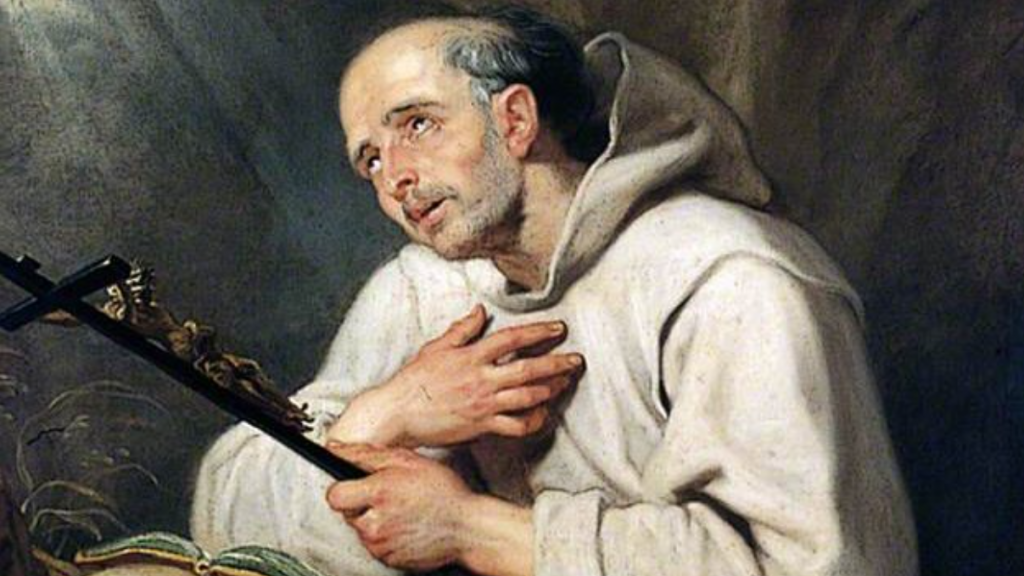St. Bruno of Cologne was born in 1030, and is said to have been a member of a prominent family in Cologne. Not much is known about his early life, but he studied theology in Reims before returning to his homeland, where he was likely ordained a priest in 1055.
The next year, he became head of the school he had attended, after its director left for consecrated life. Bruno led the school for nearly 20 years, and earned a reputation as a brilliant philosopher and theologian. In 1075, he was named chancellor of the local diocese.
At the time, there was an uproar about the behavior of the new bishop, Manasses de Gournai. After he was suspended by a local council, de Gournai appealed to Rome, while attacking and robbing the houses of the council members. Bruno left the diocese during this uproar, although he was considered a possible successor to de Gournai after he was finally deposed in 1080.
Bruno was not interested in leading the diocese, having resolved to renounce his worldly goods and enter religious life. He was inspired by a dream to seek guidance from Bishop and later Saint Hugh of Grenoble. In 1084, Bruno settled in the Chartreuse Mountains with a small group of scholars who intended to become monks.
In 1088, one of Bruno’s former students was elected Pope Urban II. Six years into Bruno’s life of monasticism, he was called to help the pope against the hostile Holy Roman Emperor Henry IV and a rival papal claimant. Bruno helped Urban during this critical time of reform, eventually obtaining permission to return to monastic life, but continuing to help the pope periodically.
In the 1090s, Bruno befriended Count Roger of Sicily and Calabria. Roger granted land to Bruno’s monks, enabling the founding of a major monastery in 1095. Bruno and his Carthusian monks were known for their strict asceticism, poverty, and prayer, and for their unique organization form — combining the solitary life of hermits with the collective life of conventional monks.
St. Bruno died on October 6, 1101. His Carthusian Order was the subject of a 2006 documentary film “Into Great Silence.”

